When it comes to gardening tools, there are two main types that people use: pitchforks and garden forks. So, what’s the difference? And which one should you be using for your garden? In this article, we will answer those questions and provide some useful tips on how to choose the right tool for the job.
What is a Garden Fork?
A garden fork is a traditional gardening tool that looks like a pitchfork but with longer and narrower tines. These tines are designed to penetrate the soil and loosen it for better aeration and drainage. Garden forks are typically used for breaking up clumps of soil, digging trenches, and cutting through root systems when planting or transplanting plants. [1]
What’s a Garden Fork Used For?
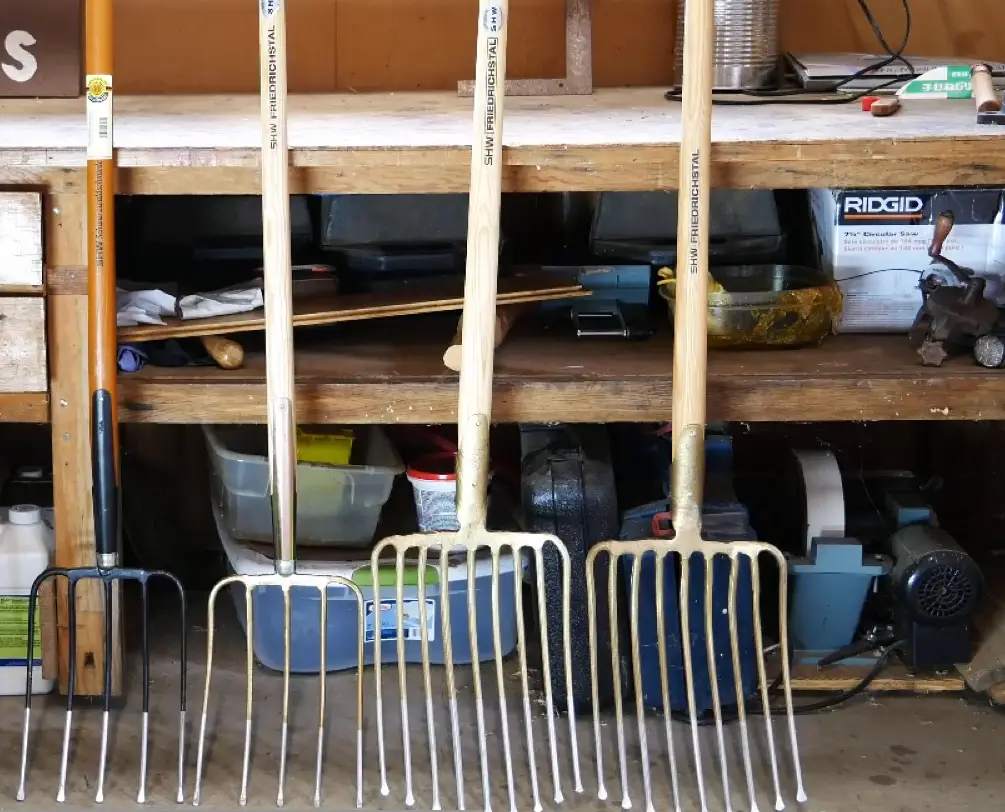
These tools can be made from metal, wood, or plastic and come in different sizes depending on the job at hand. Most of them have four tines that measure between five to eight inches long but some may have shorter ones specifically designed for prying weeds out from between cracks in patios or driveways.
Garden forks are relatively lightweight so they’re easy to handle and maneuver around tight spaces; however, this does mean that they’re not suitable for heavy-duty digging jobs. They’re best used as a supplement to spades and shovels when dealing with smaller tasks in the garden. [1]
What is Pitchfork?
A pitchfork is a farming tool with three or four long tines, used to lift and pitch hay, straw, soil, compost, and other materials. The fork’s head is affixed to a wooden handle which makes it easy to maneuver and use. Pitchforks are usually made of metal such as steel or aluminum, although they can also be made from wood. [1]
What’s a Pitchfork Used For?
Pitchforks are tools typically used to move hay, straw, silage, and other bulky materials. They have long tines that make the job of moving large amounts of material much easier than if you were attempting it by hand. Pitchforks also come in handy for leveling ground or aerating soil before planting. [1]
Types of Gardening Forks
Digging fork
This is a popular tool for digging and loosening soil. It’s also great for turning compost or aerating the ground before planting. It features a long, straight handle and four to five wide tines that work together to keep the job done efficiently. [2]
Border fork
The border fork has a similar design to the digging fork except that it has shorter, thinner tines and a more curved handle. It’s perfect for weeding around plants or in small areas of soil because it is able to get into tight spaces and reach deep down. [2]
Compost fork
The compost fork is used to turn and mix compost piles. Its tines are more rounded than the digging or border fork, so it’s perfect for breaking up large clumps of material without damaging delicate plants or roots. [2]
Potato fork
The potato fork has very long tines that help to loosen the soil around potatoes and other root crops. The sharp, curved tines make it easy to dig up the tuber without damaging it. [2]
Application
Pitchforks are commonly used for tasks such as pitching hay and other agricultural crops, removing debris, and tilling the soil. Garden forks are mainly used for weeding and aerating the soil of gardens.
When purchasing a fork-like tool, it is important to consider how the tool will be used so that the right type of fork can be chosen. Pitchforks may not be useful when cultivating a small garden or flower bed, while garden forks might not be suitable for large-scale farming operations. [4]
Features
Fork Material
The most common fork used in gardening is a garden fork, also known as a spading fork. Garden forks are usually made of metal and have four or five times that curve outward at the end. The handles on these forks vary greatly in length; some are short and handheld while others can be quite long for extra leverage when digging.
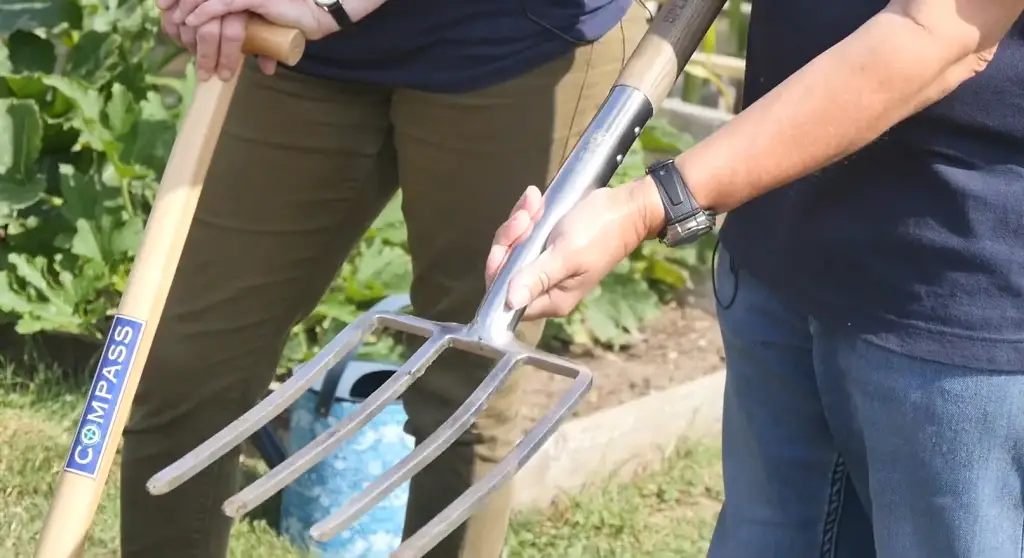
Pitchforks, on the other hand, typically have two or three curved tines and are made from wood with metal points. Pitchforks tend to be longer than garden forks and usually have wider handles to accommodate larger hands. Pitchforks can be used for moving hay bales, turning compost piles, raking leaves, and generally loosening up the soil. [5]
Handle length
Garden forks typically have shorter handles for easy maneuverability when digging in the garden. Longer-handled garden forks are useful for digging deeper holes and loosening the soil at greater depths without having to bend over too much. Short-handled pitchforks can be used for smaller tasks like turning mulch, but longer-handled pitchforks are best suited for larger jobs such as moving hay bales and raking leaves. [3]
Stainless or carbon steel
Garden forks are usually made of stainless steel which is rust-resistant and easier to clean than carbon steel. Carbon steel garden forks tend to be less expensive but require more maintenance as they can easily rust over time. Pitchforks are typically made from wood with metal points, but some models may feature stainless or carbon steel tines for extra durability. [3]
Replacement handles
It is important to check your garden fork or pitchfork for signs of wear and tear before each use, as both tools are prone to damage from overuse or harsh conditions. If the handle of your fork becomes worn or broken, it may be best to replace it completely rather than try to fix it. Garden forks and pitchforks can usually be fitted with replacement handles at most local hardware stores. [3]
Construction
Garden forks are usually constructed with four or five tines that curve outward at the end. The handle is typically made from wood or plastic and has a comfortable grip for easy maneuverability when digging. Pitchforks have two to three curved tines and longer handles for extra leverage when moving hay bales, turning compost piles, or raking leaves.
How Do I Choose?
When choosing between a pitchfork and a garden fork, it all comes down to personal preference. Pitchforks are best used for larger jobs such as moving hay, straw, or manure, while garden forks work better in smaller areas and are great for tilling the soil and aerating lawns.
Whether you’re looking for a traditional piece of farm equipment or something more modern, there is no wrong answer when it comes to choosing between a pitchfork and a garden fork. Just be sure to pick the tool that will best suit your needs! [6]
FAQ
What kind of pitchfork is best for composting?
A standard four-tined pitchfork is the best choice for breaking up and turning compost. The four curved tines make it easy to lightly pull apart clumps of compost without disturbing the soil beneath. This type of pitchfork is also great for aerating the soil around plants in a raised bed or garden since it can reach deeper into the soil than a garden fork.
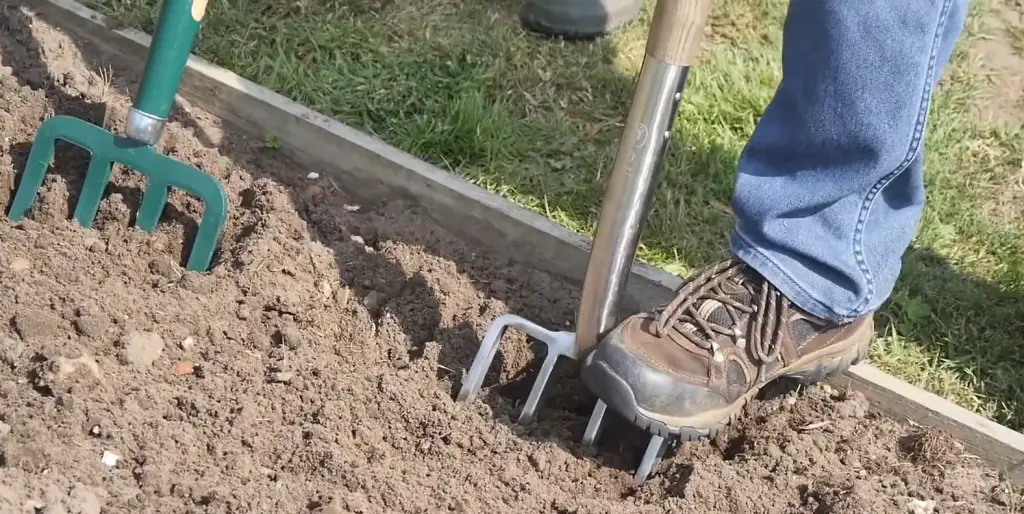
Do farmers still use pitchforks?
Absolutely! Pitchforks are still widely used by farmers who keep animals since they are the perfect tool for scooping up hay or straw to feed their livestock. For example, a hay pitchfork typically has five wide tines and a long handle that makes it easy to reach high into bales of hay. The short-handled stable fork is also popular, as it’s great for loosening compacted soil in paddocks and giving horses a comfortable place to stand.
Is a garden fork good for weeding?
Yes, a garden fork can be an effective tool for weeding. This is especially true when it comes to weeds with deep taproots that are difficult to pull out by hand. By digging the tines of the fork into the soil around the root of the weed, you can easily lift it up and pull it from its base in one motion. Garden forks are also ideal for breaking up tough soil or turning compost and manure piles.
Why do forks have 4 spikes?
Four-tined pitchforks and garden forks have four spikes because this is the most effective design for turning compost, aerating soil, and other tasks. Unlike two-tined forks, which can be difficult to use due to their short tines, four-tined forks provide a wide range of motion and are able to dig into tough materials with ease. The extended length of the tines also helps prevent soil compaction when turning or aerating the ground.
How do you pick a pitchfork?
When choosing a pitchfork, it’s important to consider the type of work you’ll be doing and what material you need to move. If you’re using it for heavy-duty tasks like turning compost or scooping up hay, then a four-tined pitchfork will provide the best results. But if you’re primarily using it for aerating soil or weeding, then a small garden fork with three tines might be more suitable. It is also important to check the quality of construction when picking a pitchfork. Look for tines that are tightly connected to the handle, as well as a sturdy handle that won’t break under pressure. Last but not least, make sure the size of the fork is appropriate for your height and strength.
Which pitch is easiest to hit?
When it comes to hitting a pitch, the easiest one to hit is typically a straight ball that is traveling at a slow speed. This type of pitch will give you plenty of time to line up your bat and make contact with the ball. Fastballs and breaking balls require more precision and timing, so they can be harder to hit. To improve your batting skills, practice swinging a bat at stationary objects like tennis balls or wiffle balls – this will help you develop strength and accuracy. With enough practice, you’ll soon be able to make even the toughest pitches look easy!
Why is it called a pitchfork?
The term “pitchfork” is thought to have originated in the 15th century when farmers used a two-tined tool to “pitch” hay or straw onto a wagon. Eventually, this two-pronged tool evolved into the four-tined pitchforks we know today. The name stuck and was eventually shortened to simply ‘pitchfork.’ As for the term ‘garden fork’ – that likely came about as gardening became more popular and people needed specialized tools for digging and aerating soil. So while these forks may look similar, they serve very different purposes!
What should I look for in a garden fork?
When looking for a garden fork, it’s important to make sure the tines are made of sturdy material, such as stainless steel or high-grade aluminum. This will ensure your fork is durable and resistant to corrosion. Additionally, look for a comfortable grip that fits comfortably in your hand and won’t slip while you’re working. Finally, consider the size of the fork – if you’re doing intense digging work, then choose one with longer tines; lighter-duty tasks may require a shorter handle. With these features in mind, you’ll be able to find the perfect garden fork for all your gardening needs!
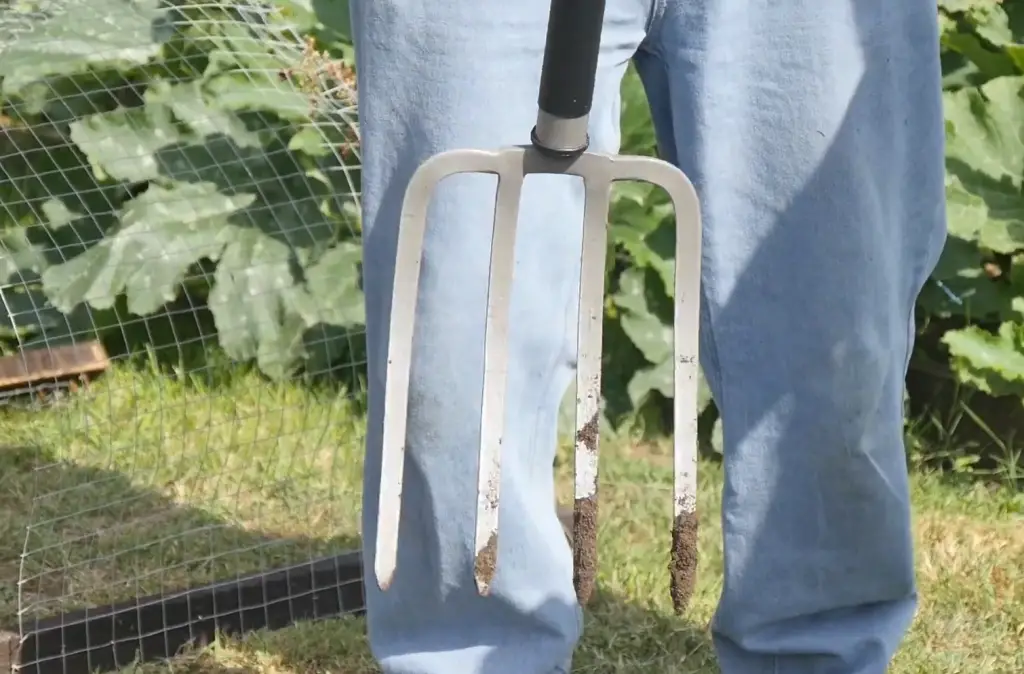
Why do gardeners use plastic forks?
Plastic garden forks are a great choice for those who don’t want to invest in a more expensive metal fork. They’re light-weight and easy to maneuver, making them ideal for small gardening tasks like weeding or transplanting seedlings. Plus, they’re often less expensive than metal forks and can be found at most home improvement stores or online retailers. Just make sure to check the quality of construction before you buy – some plastic forks may not hold up under pressure. With the right plastic fork, you can get your garden chores done quickly and safely!
How many prongs does a garden fork have?
Most garden forks have three tines or prongs, but there are also some that come with four. The number of tines typically depends on the type and size of the fork – a smaller fork might only have three tines, while a larger one may have four. Generally, garden forks with fewer tines are good for light-duty tasks such as weeding and aerating soil, while those with more tines are better suited for heavier-duty tasks like turning over soil or moving large amounts of compost. No matter how many tines you choose, make sure your garden fork is well-made and comfortable to use!
Useful Video: Pitchfork Uses in Your Garden
Conclusion
Now that you know the difference between a pitchfork and a garden fork, you can make an informed decision on which type of tool is best for your gardening needs. Whether you choose one or the other, having both tools in your arsenal can make all the difference when it comes to getting work done in the yard. As long as you keep in mind their respective benefits and limitations, either of these tools can be an excellent addition to any gardener’s repertoire. Happy digging!
References:
- https://takeayard.com/garden-forks-vs-border-forks/
- https://www.gardeningknowhow.com/garden-how-to/tools/types-of-gardening-forks.htm
- https://www.sustainablemarketfarming.com/tag/choosing-a-garden-fork/
- https://www.wonkeedonkeetools.co.uk/forks/what-are-the-different-types-of-fork
- https://www.epicgardening.com/digging-fork/
- https://www.gardentoolexpert.com/garden-fork-what-the-pros-say/





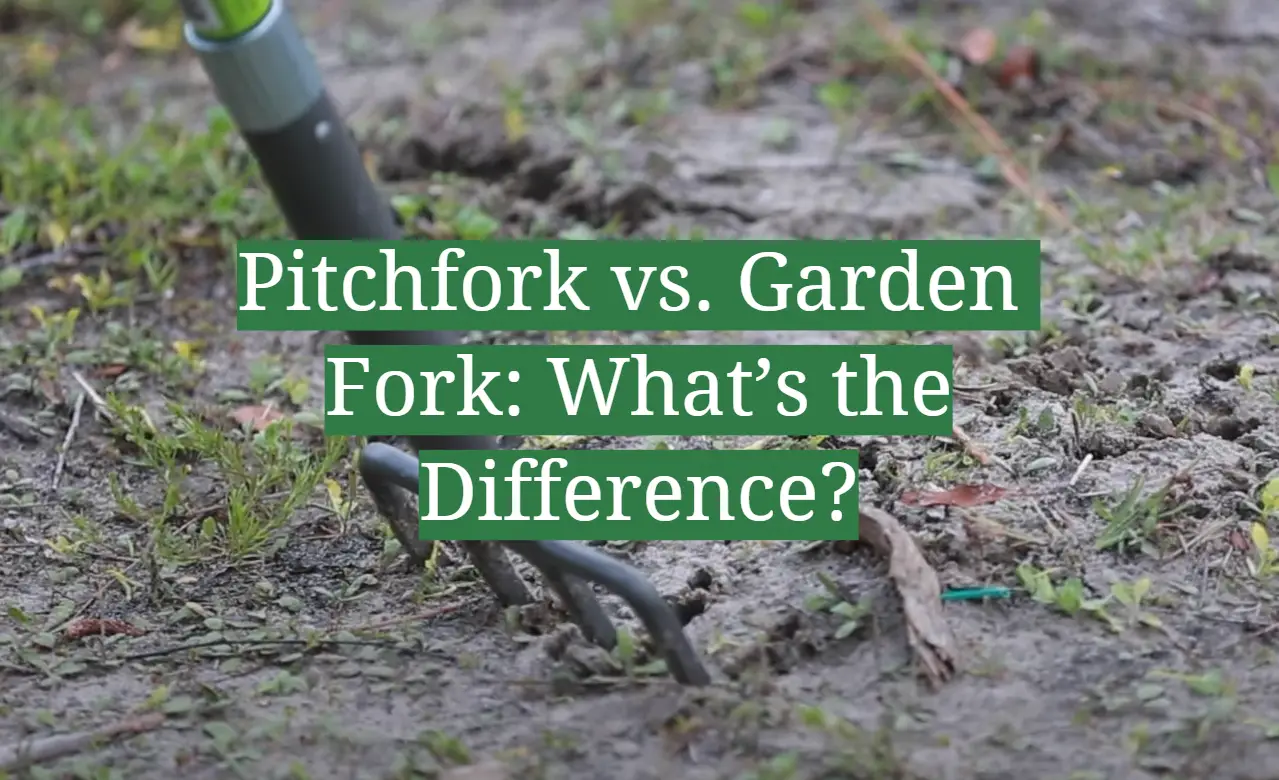
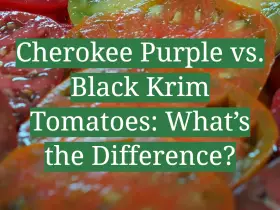
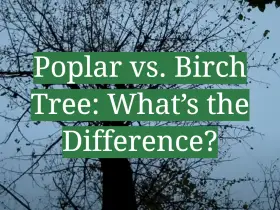


Leave a Reply
View Comments